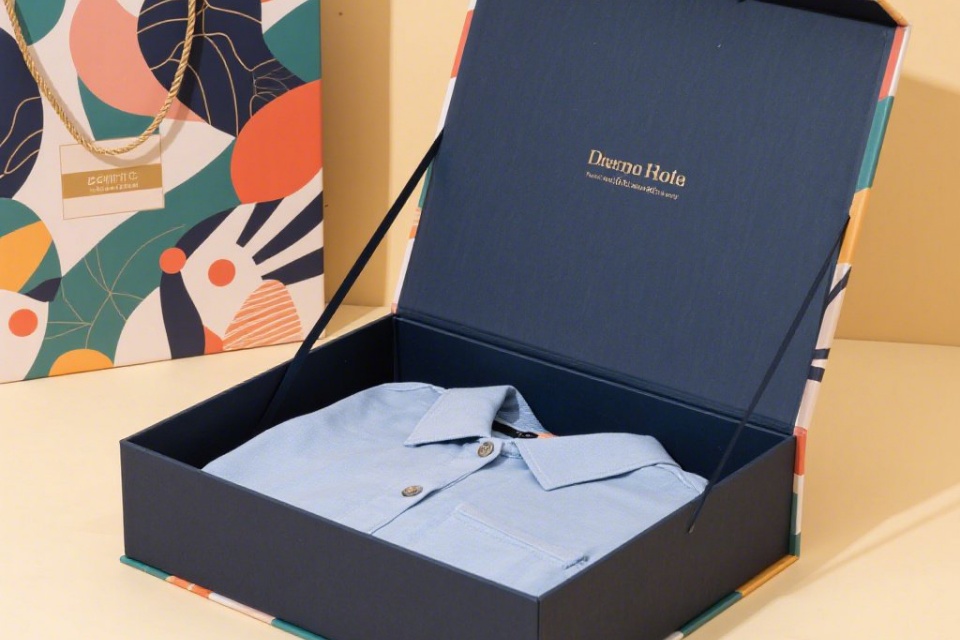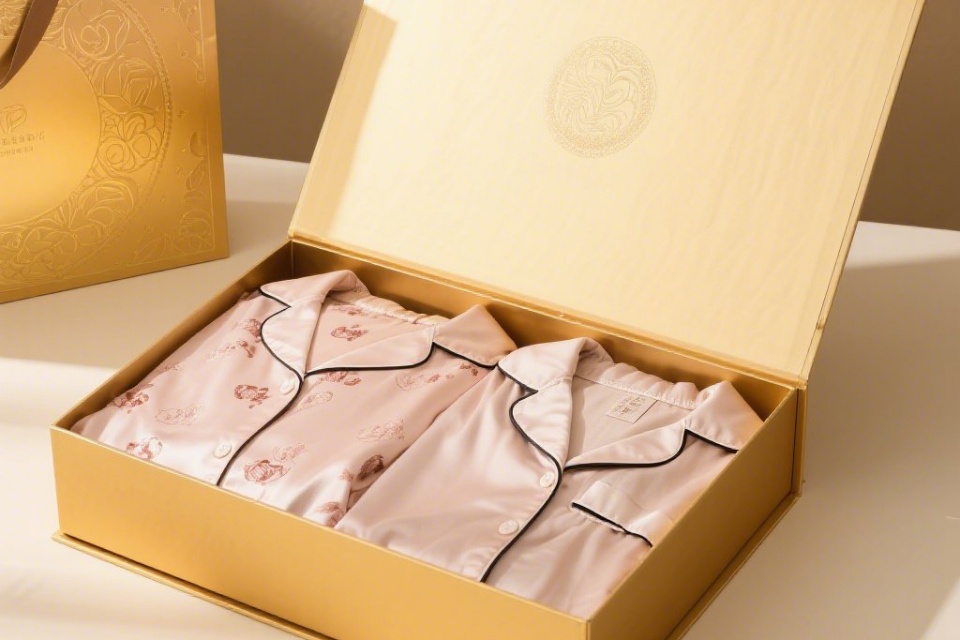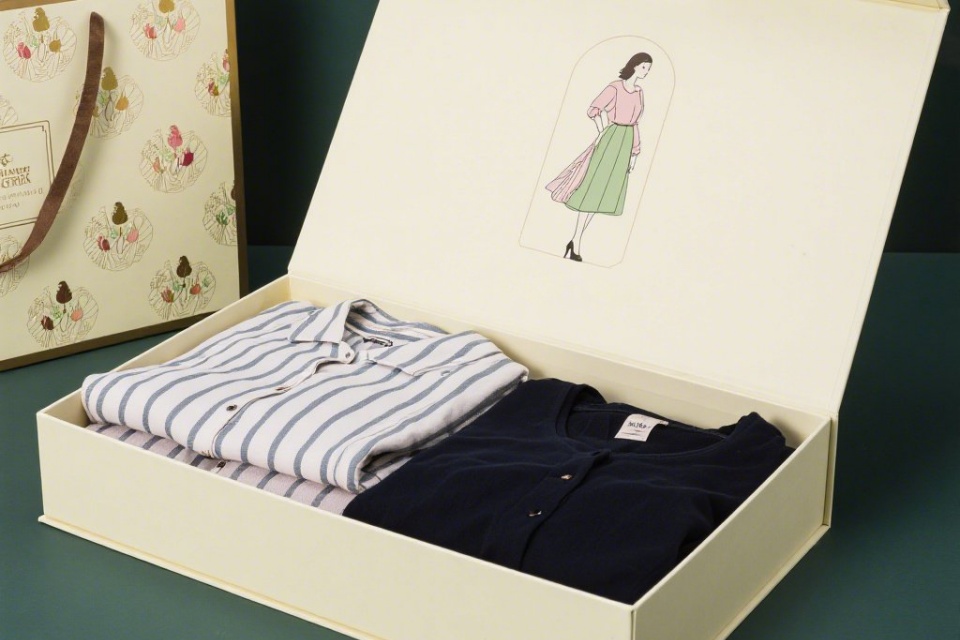Industry News
Creative Clothing Packaging Ideas To Make Your Brand Stand Out
Creative Clothing Packaging Ideas To Make Your Brand Stand Out
Summary
Creative clothing packaging is a strategic approach that enhances brand visibility and consumer engagement in the competitive fashion industry. This form of packaging not only secures garments during transport but also serves as a crucial marketing tool, conveying the brand's identity and values through innovative design. As consumer preferences increasingly lean towards sustainability, brands are adopting creative packaging solutions that resonate with eco-conscious shoppers, making it a notable trend in contemporary retail.
The importance of creative clothing packaging lies in its multifaceted benefits, including enhancing brand recognition, fostering emotional connections, and providing memorable unboxing experiences. Eco-friendly options, such as biodegradable materials and reusable containers, have gained traction as brands seek to align with consumer values regarding environmental responsibility. Similarly, interactive elements, such as QR codes, engage consumers more deeply by offering additional content and experiences related to their purchase.
Notably, the rise of minimalism in packaging design reflects a broader shift towards efficiency and sustainability, with brands opting for clean aesthetics that prioritize the product while minimizing waste. Furthermore, the trend towards personalized packaging adds a unique touch that enhances customer satisfaction and loyalty, demonstrating how packaging can influence consumer behavior and brand perception.
Despite its advantages, the implementation of creative packaging presents challenges, such as managing costs and ensuring sustainability without sacrificing design or functionality. Brands must navigate these complexities while remaining adaptable to evolving consumer expectations and market trends. The balance between innovation and practicality remains a pivotal consideration in the ongoing evolution of clothing packaging strategies.
Types of Creative Clothing Packaging
Creative clothing packaging plays a vital role in enhancing brand identity and providing a memorable customer experience. Various types of packaging can be employed to not only secure garments during transport but also to convey the brand's message and aesthetics.
Eco-Friendly Packaging
Eco-friendly packaging has become increasingly popular as brands strive to reduce their environmental footprint. This type of packaging utilizes sustainable materials, such as recycled cardboard, compostable poly mailers, and biodegradable packing tape, which help minimize waste and pollution during production and disposal. By opting for eco-friendly solutions, brands can appeal to environmentally conscious consumers, thereby enhancing customer loyalty and brand image.
Reusable Packaging
Reusable packaging presents a sustainable option that extends the life of packaging materials. Cloth bags, durable containers, and long-lasting pouches not only reduce waste but also serve as a functional item for customers post-purchase. This approach fosters brand connection, as customers are likely to utilize these reusable items in their daily lives, promoting continuous brand visibility.
Minimalist Packaging
Minimalist packaging focuses on simplicity and functionality while maintaining an attractive aesthetic. This design philosophy often employs fewer materials, which can lower costs and reduce environmental impact. Brands can use eco-friendly materials in a straightforward design that highlights the product, thus reinforcing the message of sustainability and efficiency.
Interactive Packaging
Interactive packaging integrates technology to engage consumers more effectively. For instance, QR codes can be incorporated into the design, linking customers to promotional content, detailed product information, or interactive experiences that enhance the overall unboxing experience. This innovative approach not only informs but also entertains, creating a memorable connection between the consumer and the brand.
Plantable Packaging
Another creative idea in sustainable packaging is plantable packaging, which allows customers to grow plants from the packaging itself. Companies like Botanical Paperworks offer seed-infused materials that can turn into wildflowers or herbs after disposal. This concept not only highlights the brand's commitment to sustainability but also provides consumers with an engaging and environmentally friendly way to recycle.
Stylish Bags and Boxes
The use of custom-designed bags and boxes can significantly enhance the unboxing experience. Kraft paper bags and elegantly designed boxes can be tailored to reflect the brand's style while ensuring product protection during transport. Such packaging not only adds aesthetic value but also reinforces the brand's identity. By utilizing these creative packaging ideas, brands can create a distinct presence in the market while prioritizing sustainability and customer engagement.
Benefits of Creative Packaging
Creative packaging plays a vital role in enhancing brand perception and can significantly impact consumer behavior. It not only serves as a protective container for products but also acts as a marketing tool that communicates the brand's values and identity.
Enhancing Brand Recognition
A well-thought-out packaging design fosters brand recognition and loyalty. Consistent use of logos, colors, and design elements reinforces brand identity every time a consumer encounters the product. For clothing brands, this can mean using distinct color palettes and typography that resonate with the target audience, thereby creating a memorable shopping experience.
Emotional Engagement
Creative packaging has the power to build emotional associations with consumers. Elements such as luxurious finishes, elegant typography, and engaging visuals can create a sense of exclusivity and desirability. When packaging resonates emotionally with consumers, it can influence purchasing decisions and encourage long-term brand loyalty.
Creating a Unique Unboxing Experience
The unboxing experience is crucial for clothing brands as it extends the customer's engagement beyond the initial purchase. Personalized packaging, including thank-you notes or care instructions, can leave a lasting impression and connect the brand with the customer. Innovative packaging designs, like surprising opening mechanisms or interactive elements, can elevate this experience and make it memorable.
Communicating Sustainability
In today's eco-conscious market, packaging that reflects sustainability practices can enhance a brand's image as a responsible entity. The use of biodegradable or compostable materials not only reduces environmental impact but also appeals to consumers who prioritize eco-friendly practices. This alignment with sustainability can differentiate a brand from its competitors and attract a broader customer base.
Driving Sales Through Persuasion
Understanding consumer behavior is essential for creating persuasive packaging designs that trigger emotional responses and drive sales. Elements such as color schemes, imagery, and fonts can greatly influence consumer psychology and purchasing decisions. By addressing the specific preferences of the target audience, brands can create packaging that not only captivates attention but also encourages purchases.
Cost-Effectiveness and Longevity
While the initial investment in creative packaging might seem higher, it can lead to long-term cost savings by reducing waste and increasing sales through effective branding. Businesses can optimize materials and work with reliable partners to ensure quality while controlling costs, ultimately enhancing the overall value of the packaging.
Examples of Creative Clothing Packaging
Innovative Packaging Concepts
In the competitive fashion market, brands are increasingly recognizing the importance of unique and thoughtful packaging designs. Creative clothing packaging not only protects the items but also serves as a vital marketing tool. For instance, Nike has introduced the 'Nike One Box,' a packaging concept that eliminates the need for an outer box when shipping shoes. This innovative design reduces packaging waste by 51% for single online orders, reflecting Nike's commitment to sustainability while enhancing the unboxing experience for consumers.
Sustainable Packaging Solutions
Brands such as Patagonia and Adidas have also made significant strides in adopting eco-friendly packaging. Patagonia uses 100% recycled and recyclable poly bags for shipping and has implemented the "Worn Wear" program to encourage customers to return old gear for repair or resale, thereby minimizing waste. Similarly, Adidas is transitioning to using only recycled polyester in all of its products by 2024 and has replaced plastic hang tags with jute ribbons, demonstrating a commitment to sustainability throughout its packaging process.
Personalized Customer Experience
The unboxing experience is an essential part of consumer engagement. Custom packaging that includes personalized messages or high-quality materials can significantly enhance perceived value. Research shows that 40% of consumers are more likely to repurchase from brands that offer premium packaging. Companies like FabFitFun have effectively utilized personalized touches within their packaging to create memorable experiences, encouraging customer retention.
Decorative and Branded Touches
Decorative packaging also plays a crucial role in brand identity. The use of stylish and branded materials can help create a lasting impression. For example, Kraft paper bags have become a popular choice for many brands, offering a sustainable yet aesthetically pleasing option. These packaging solutions not only secure the clothing items but also contribute to a positive consumer experience by elevating the overall presentation of the product.
Trends in Clothing Packaging
Clothing packaging has evolved significantly, with a growing emphasis on sustainability, customization, and consumer engagement. As brands seek to differentiate themselves in a competitive market, several key trends have emerged.
Sustainable Packaging
One of the most significant trends in clothing packaging is the shift towards sustainable materials. Companies are increasingly opting for recyclable, biodegradable, or compostable packaging solutions to meet consumer demand for environmentally responsible products. This commitment not only helps reduce waste but also enhances a brand's image, as modern consumers prefer to support organizations that prioritize sustainability. Sustainable packaging options include materials made from recycled plastics, FSC-certified paper, and even paper derived from stone.
Customization and Personalization
Customization has become a vital aspect of clothing packaging, allowing brands to create unique designs that resonate with individual customers. This trend emphasizes the importance of personalization in fostering emotional connections with consumers. By adding names, messages, or bespoke artwork to packaging, brands can enhance the customer experience and increase brand loyalty.
Minimalist and Clean Designs
In recent years, minimalist design has gained traction in clothing packaging. Brands are focusing on simple, clean aesthetics that highlight the product and brand name, eliminating unnecessary elements that can distract consumers. This trend aligns with the overall shift towards sustainability, as simpler designs often require fewer materials and reduce waste.
Engaging Unboxing Experiences
The unboxing experience has become a critical component of packaging strategy, influencing consumer perceptions and brand loyalty. Packaging that offers an engaging unboxing experience—such as the inclusion of textured materials, attractive wrapping, or handwritten notes—can create a lasting impression and encourage customers to share their experiences on social media. Research indicates that 42% of consumers are more likely to share products that arrive in premium or unique packaging, underscoring the impact of packaging design on brand visibility.
Use of Color and Texture
Color psychology plays an important role in clothing packaging, with brands strategically selecting colors to evoke specific emotions and perceptions. For instance, warm colors like red and yellow can convey excitement, while cool colors like blue evoke trust. Additionally, the tactile experience of packaging—such as the use of soft-touch coatings or embossed patterns—can enhance consumer engagement and foster emotional connections.
Flexibility and Innovation
As the packaging industry adapts to ongoing challenges, including supply chain interruptions, innovation and flexibility in packaging design are increasingly important. Brands are exploring new materials and technologies to enhance functionality while also creating visually appealing packaging that stands out on shelves and online platforms. The integration of augmented reality and interactive elements into packaging is anticipated to become more prevalent, providing consumers with unique, immersive experiences.
Challenges in Implementing Creative Packaging
Implementing creative packaging for clothing brands comes with various challenges that need to be addressed to achieve effective results.
Cost Considerations
One of the primary challenges is managing costs associated with innovative packaging designs. While unique and interactive packaging can enhance consumer engagement and brand perception, it often requires a higher investment in materials and design services. Brands must balance the desire for creative packaging with budget constraints, especially when aiming to maintain competitive pricing for consumers. Bulk purchasing can alleviate some costs, but the initial investment in custom designs and quality materials can still be significant.
Sustainability Concerns
Another pressing challenge is ensuring sustainability in packaging. With growing consumer demand for eco-friendly solutions, brands are increasingly pressed to choose materials that are recycled, recyclable, or compostable. However, achieving sustainability can complicate the design process, as not all creative packaging solutions can easily meet environmental standards. Brands must carefully consider the lifecycle of their packaging and explore partnerships with suppliers committed to sustainable practices, which can also add to costs and logistics complexities.
Consumer Expectations and Trends
Consumer preferences and market trends are constantly evolving, making it essential for brands to stay updated on the latest design innovations while avoiding fleeting trends that may not resonate with their target audience. Implementing designs that are both appealing and functional requires thorough market research and understanding of consumer behavior, which can be resource-intensive. Brands must also ensure that their packaging aligns with their overall brand identity and messaging, which can limit design choices if not managed effectively.
Functional Design Challenges
Lastly, creating packaging that is not only visually striking but also functional poses a unique challenge. Packaging must facilitate easy opening, storage, and disposal, while also providing adequate protection for the product during shipping and handling. Striking the right balance between aesthetic appeal and practical functionality is crucial; failure to do so can result in poor user experiences, which may adversely affect brand loyalty and customer satisfaction.
Categories
Latest News
Contact Us
Contact: Aaron Lee
Phone: +8613570866244
Tel: +8675529490260
Add: Li Songlang 2nd Industrial Zone,No.18,FengTang Rd,Guangming New District


